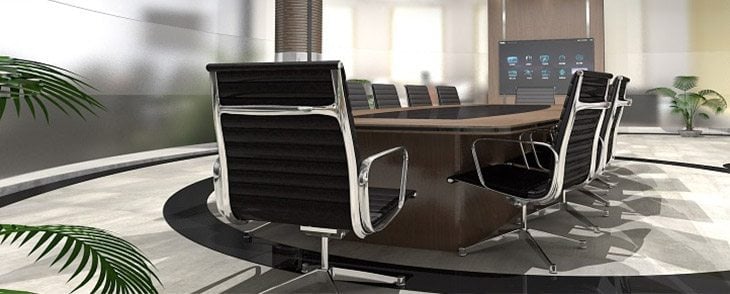Michael Spath of Kapnick Insurance discusses risk solutions with expert Amy DeKeyser of Kapnick Insurance. Here are highlights from that conversation.
Michael: Welcome to Kapnick Insurance’s Ask the Expert. I’m Michael Spath. Here with me is Amy DeKeyser, our Vice President of Risk Solutions at Kapnick. Amy, thanks very much for joining us.
When someone hears the term risk solutions, that can mean a lot of different things to a lot of different people. What does it mean at Kapnick?
Amy: Risk Solutions really is all encompassing from loss control and safety, cost containment strategies, and more behavioral-based–looking at someone’s organization holistically. It can also include wellness and other outside resources.
Michael: One of the things we are always talking to our clients or our prospects about is, how significant are your risks? Because your risks will ultimately determine your exposures. And your exposures will determine how much premium you are going to pay to cover those exposures.
If you can reduce those risks, you can reduce those exposures and in theory, you can reduce those premiums. So, Amy, let me ask you, how important is it for any business to identify and problem-solve for their greatest risk, or overall, just understanding where their risks are?
Amy: Well, especially as the market is now, those that are not paying attention to what their risks are, as minimal as they may be, are the ones that are working themselves out of their industry. Those that are not exploring options of reducing risks based on human behavior are not checking the box, they’re not getting the contracts, they’re not getting the best rates.
Michael: I had a client that was having a lot of workers’ comp claims because they had people that were getting into accidents. And I know one of the things you just said to me, was, well, what is their protocol? What is the driver checklist before they turn the ignition on?
It sounds like really simple things.
Amy: Absolutely. You could say they’re focusing on the tangibles, on their investment, but they have to realize that their employees are an investment as well.
So they may have that checklist of, check the mirror, check the tires, check all that, because they want to protect the vehicle in which the person’s getting in. But are they checking the box of the human that’s getting in the vehicle? The mental health, the physical. That person might be completely distracted, where presenteeism is a much bigger problem than absenteeism these days, and you’re putting that person in a vehicle not knowing if they’re fully focused.
So that’s where I talk about the human behavior and investing in the employees. If it’s something at home that’s going to follow them to work. It’s going to cost the employer so they might as well drill down and help take care of that piece.
Michael: So a little bit of: are you checking in with your employees on a regular basis? Are you checking in with them every day?
Amy: Absolutely. You don’t know what that person is dealing with at home. You don’t know what that person is dealing with. Maybe financially, physically, emotionally, and so to have that distraction is such a safety concern.
We talk about mental health in this country over and over, but it’s those that connect mental health to safety. It really, really does matter.
That’s why providing those opportunities for employees to concentrate on their financial health, their mental health, their physical health while they’re in the workplace is essential. We spend more time at work than we do with our families.
So the more that employers are able to bring that piece and protect that human element, the more that they’re going to find that that’s an employee benefit. It’s not often thought of. And with the great resignation, it is so important that we’re bringing pieces that make employees want to stay and make them feel valued.
Michael: Amy, how are the risks in something like manufacturing different than construction, different than transportation? I guess the question is how specific is each industry, the risks and the solutions that Kapnick and you provide to each individual industry?
Amy: At the end of the day, it all goes back to that human element piece. You’re still hiring humans to do each of those. It’s just a matter of what safety sensitive roles they’re playing. So you do have to drill down in the level of training that’s required, where your focus has to be, whether it be drug testing, whether it be extra certifications.
Michael: So take me through a process a little bit here. Someone contracts with Kapnick and they say, I want to reduce my risk exposure. Where do you come in and what type of role do you play for them and for Kapnick?
Amy: Sure. The first step always is not for us to make assumptions. We want to understand the culture. So first and foremost, we take a look at their history, where have they been? That’s going to be very telling. We like to have boots on the ground. We will go do a mock audit. And that is really raw for a client to undergo because many people can say, yes, we do this. So, do you have a safety program? Yes. Have you shared it with your employees? Yes. Where is it? Well, it’s in the binder, and when they’re hired, we review it with them.
Once we do employee interviews, that could all change.
One of the biggest things is making sure that what we say we do, we actually are doing it, and that we’re sharing it and we’re training on it. So during that mock audit, it can really be telling for an organization to say, yes, we check the box of putting these policies and procedures in place, but we have failed to truly implement it and have the follow through.
So that’s where we can then build our timeline of what’s the low-hanging fruit? Where do we start? What are some of the opportunities for us to make your safety culture better immediately? What are some things that may need capital? What are some things that are going to be long-term that we’re going to turn this ship around?
And from there we can really tell their story in the marketplace. At Kapnick, we have great relationships with our insurance carrier partners for the mere fact that some things can be a little hairy, but they know that we’re going to be intimately involved in it. But we can also tell a story to explain how we’re going to help them and how we’re going to be committed during the entire process that they’re underwriting, that we’re going to help make them better.
So it’s not just a one stop consultation of, here’s your problems, go off and fix it. That builds our relationship throughout the entire time that we have it.
Specifically in my role, I love the fact that I’m working with the safety managers. I’m working with the HR managers. I’m working with the site supervisors. I’m working way down within the organization because those are the people that I need to make sure that they’re giving that message to their organization and have that follow through.
Michael: I think what you’re talking about is building a culture that extends from the bottom all the way to the top and the top. Risk Solutions is about creating that culture within an organization.
Amy: Correct. You should be able to ask what is the importance of safety to the owner of a company all the way down to the hourly employee? And there should be the same answer.
It’s not if a claim happens, it’s when a claim happens. That’s why we’re in the business that we’re in, and you want to make sure that those policies are there to protect you.
Michael: Amy, thanks very much for joining us.






